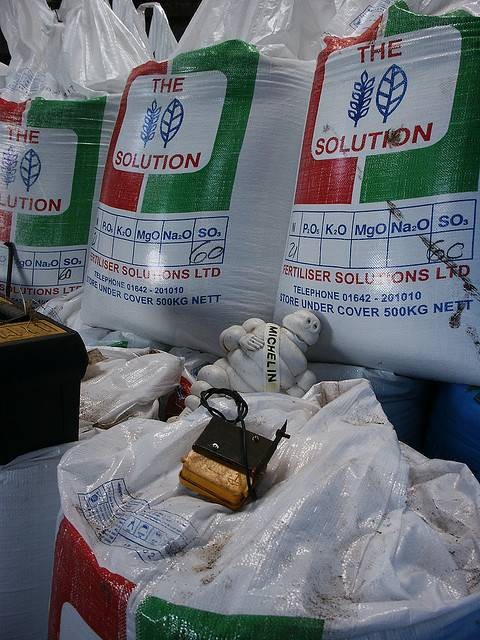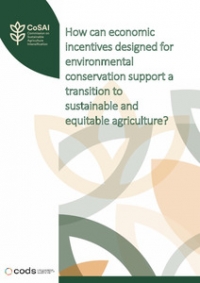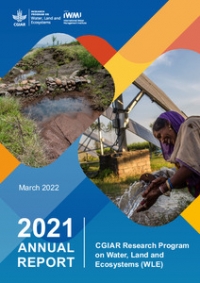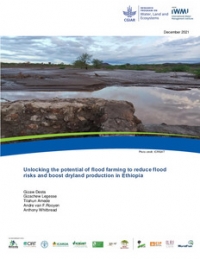Stephen Carr’s recent blog post on the importance, or lack thereof, of farm size in Sub-Saharan Africa, sparked a vibrant and informative discussion among researchers from the CGIAR Research Program on Water, Land and Ecosystems (WLE).
Carr credits the large increase in food production in Malawi to the country’s fertilizer and seed subsidy program. It should not be surprising that subsidies have such an effect, he says. “We easily forget that the fertility of soils in the UK, Europe, USA and Australia were built up through decades of government subsidies. Then we expect resource poor African farmers to achieve the same without them! It simply will not happen!” agrees Keith Shepherd of ICRAF.
Subsidies have enabled farmers in Malawi to get off food aid; now farmers can use their own human capital to produce food “instead of waiting for a food aid lorry to show up,” says Katherine Snyder of IWMI. These benefits of subsidy programs are often left out of the conversation. Despite the negative connotations that many development agencies have attached to subsidy programs, they have a place on the development agenda.
Increasing agricultural production is a costly endeavor. A country struggling to meet food demands has few options. For example, Malawi’s options were to subsidize the farm industry or import more food. When determining whether to subsidize farming, policy makers, planners and agricultural economists need to consider the opportunity costs of not subsidizing, said Deborah Bossio of CIAT. It can be more costly to import food than to just subsidize the sector. After all, “where would agriculture be in India if it were not for the heavy subsidies that the government uses to support the sector, similarly the entire agricultural sector of the EU is dependent on subsidies” said WLE Interim Director, Andrew Noble. Perhaps we should be looking at ‘smart’ subsidies that can stimulate increases in agricultural productivity?
The current debate focuses on subsidies versus the free market, explains Noble. But have free markets helped farmers in Sub-Saharan Africa so far? The entire agricultural sector of developed countries has been shaped by subsidies, Noble says. There were even subsidies in Australia in the past, where the farming sector is now arguably one of the world’s most efficient and is now free of subsidies. Clearly, subsidies have a role to play in the development of the agricultural sector.
“A market perspective is one that looks at opportunities,” says Noble. There are often few commercial opportunities for agricultural entrepreneurs in landlocked regions like Malawi, where the cost of transporting materials to and from ports is high. In these situations, government interventions can help.
“The challenge for programs like WLE will be creating a business model that addresses the entire range from commercial entities to the poorest of the poor and pulling them out of poverty, which means putting money in their hands,” says Noble.
But subsidies are not a silver bullet. “Several studies show that the subsidy [in Malawi] has crowded out the private fertilizer market and that the fertilizers did not reach the poorest farmers,” says Claudia Ringler of IFPRI. Malawi uses 70% of its agricultural budget on subsidies, “crowding out investment in other key programs—such as roads, extension services.”
“Unfortunately investment in extension does not have a positive history in Malawi, as far as increasing farm productivity is concerned,” responds Carr. The World Bank invested in extension projects for a number of years but none were wildly successful. However, “the first year of the current subsidy programme resulted in the production of a greater quantity of incremental maize than that achieved by the 15 years of extension projects.”
“The reason is not hard to find,” Carr explains. “Malawian agriculture is totally dominated by maize, which is the natural crop of choice for people who have to feed themselves off a severely limited area of land.” While it is easy to blame subsidy programs for crowding out investment, the overall costs and benefits depend on regional or local contexts. In Sub-Saharan Africa, ‘smart’ subsidies may be a viable option for increasing agricultural productivity.
Stephen Carr has worked with small-scale farmers in Malawi since 1987 and has lived in rural Malawi since 1989. He was a senior agriculturalist with the World Bank for 15 years.
























Comments
This is very beneficial information. Two things I like about the post, one it is straight forward and two it does not attempt to promote anyone's position particularly. Thank you for the info Abby.
This is very interesting discussion topic. It will be verry useful to provide subsidies as after addressing key areas for intervention. According to my two years of experience i have realise that free market will detoriate tanzania agriculture small holder farmers due to stiff competition on technology, research and marketing.
As the case of Tanzania the subsidies as of seeds and fertilizers are provided, but still the efficiency and effectiveness are not that much positive. Companies and responsible department are not that much strictly in controling quality and standards,monitoring and even the priorities of researches and proffesionalism and worse enough the extension services part by the government isnt well organised.
So before provide and continue giving subsidies to farmers as the case of tanzania i wil prefer more researches and advocacy on seed selection, marketing as wel as extension services.
Add new comment